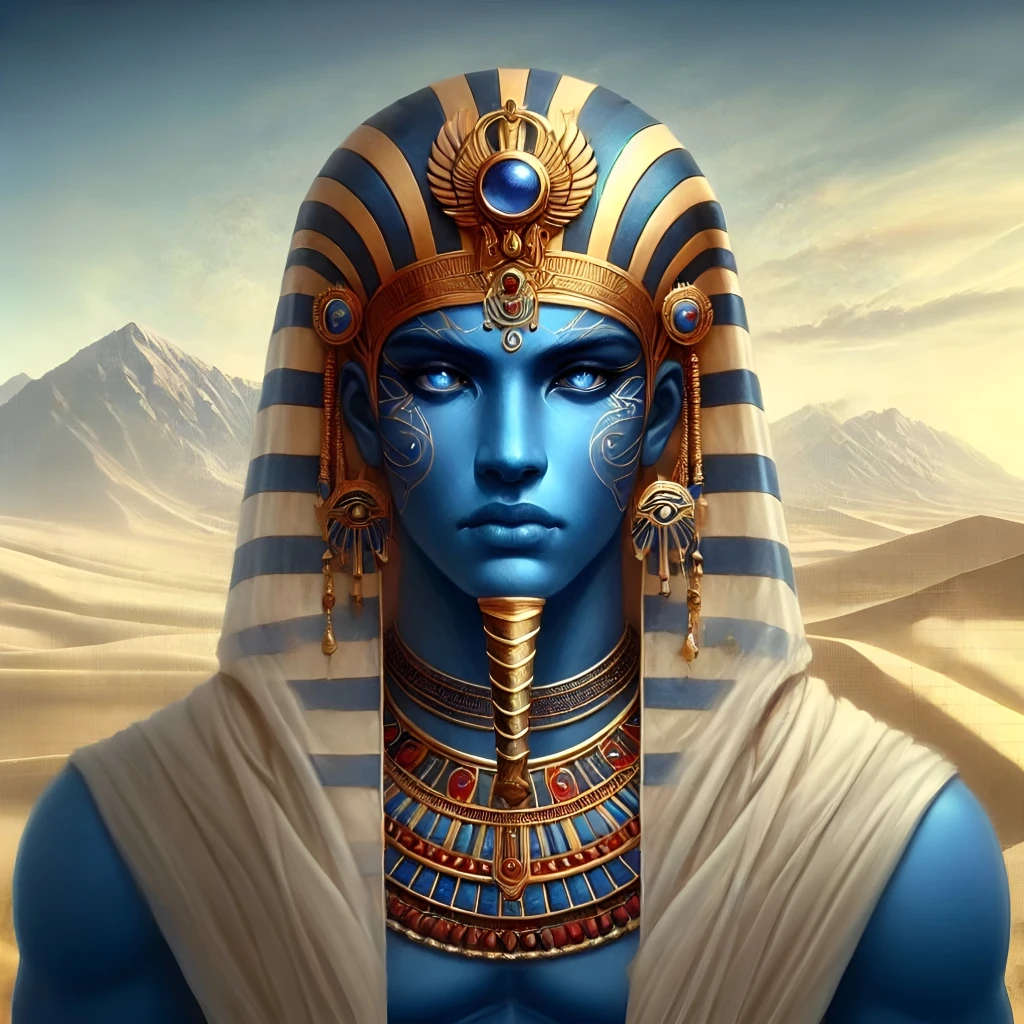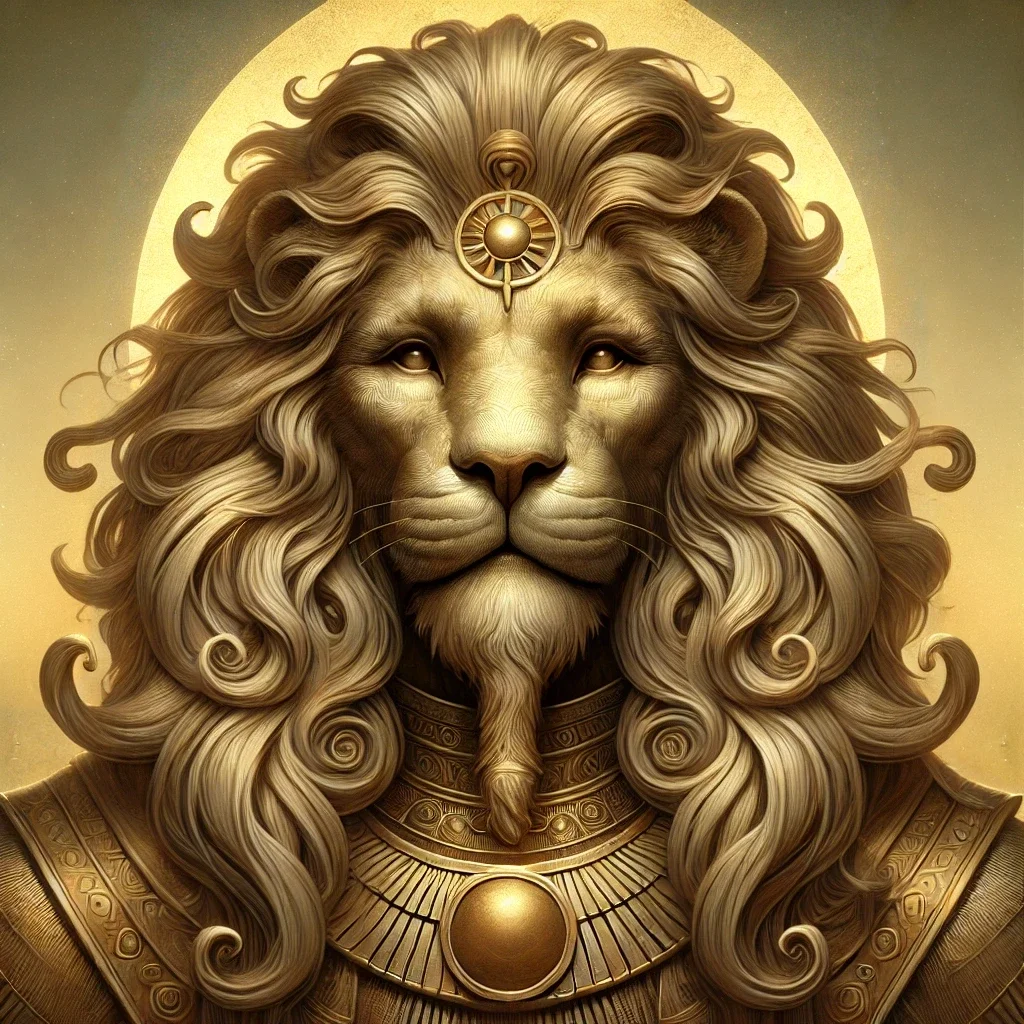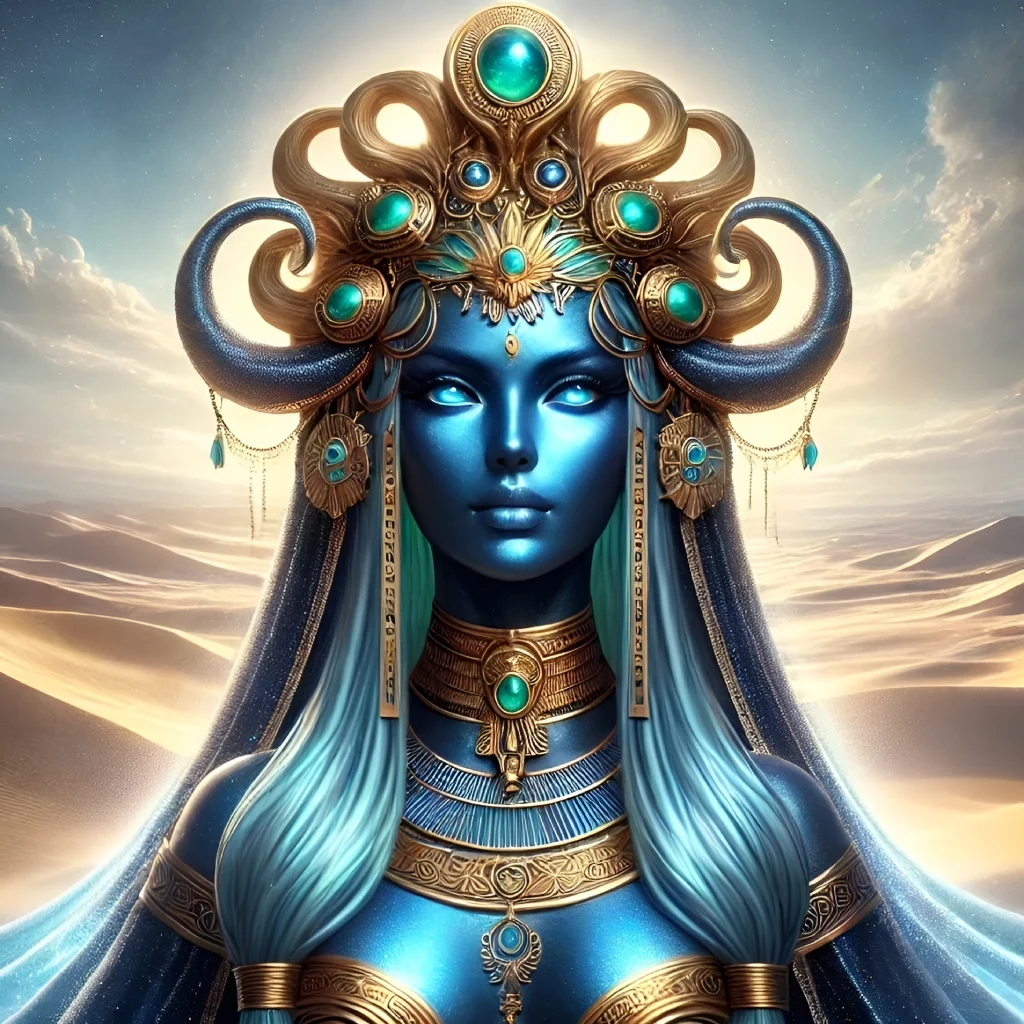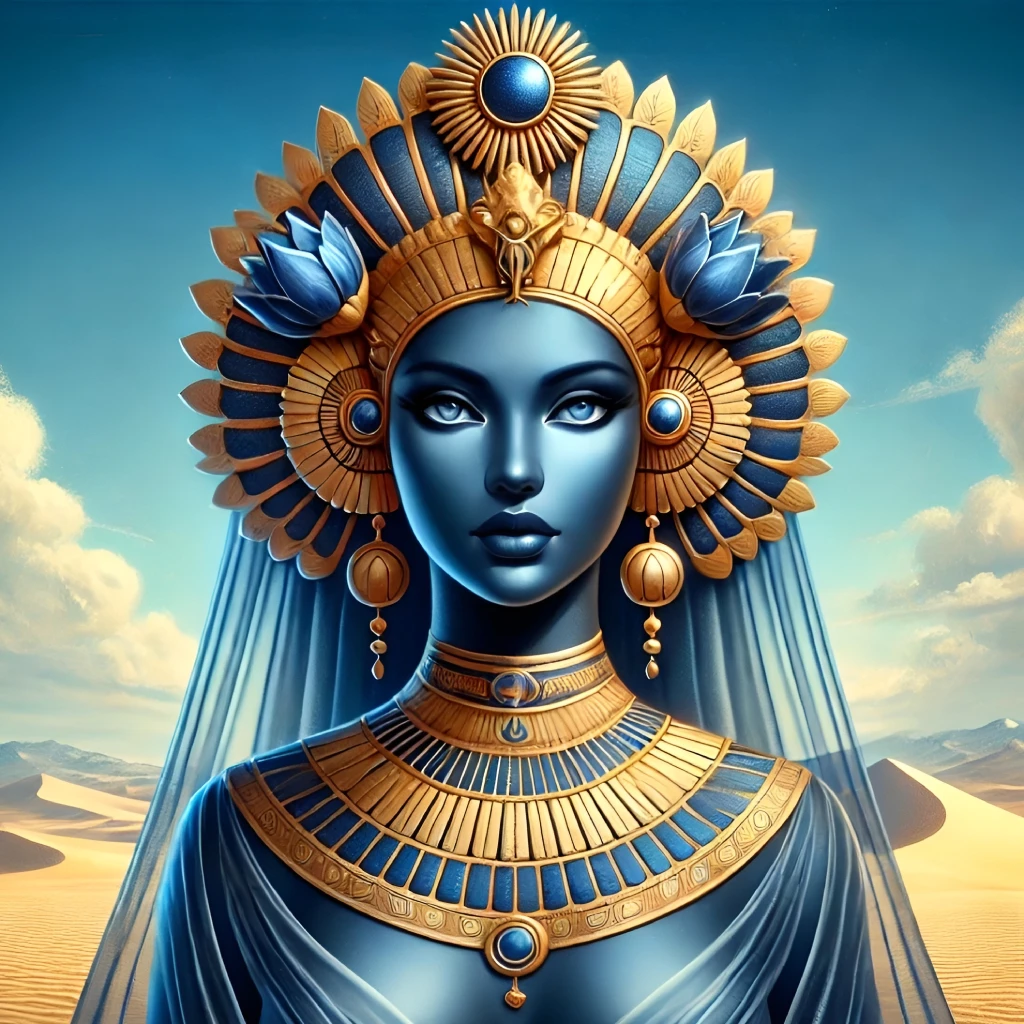Amun, one of the most prominent deities of ancient Egypt, was venerated as a primordial and transcendent force. His name, meaning “The Hidden One,” reflects his elusive and omnipresent nature. Over time, he absorbed attributes of other deities, notably Ra, becoming Amun-Ra, the supreme solar deity. He was also referred to as “King of the Gods,” “Lord of Thrones,” and “Master of the Hidden Realm.” His influence extended far beyond Egypt, reaching Nubia and even the Greco-Roman world, where he was equated with Zeus and Jupiter. His worship endured for millennia, shaping political, spiritual, and cultural dynamics across various regions.

Origins
Early Worship in Thebes
The earliest references to the deity appear in the Middle Kingdom (c. 2055–1650 BCE), where he was a local god of Thebes. Unlike other deities with clear mythological origins, he was conceptualized as a hidden force that shaped existence. His rise to prominence coincided with the Theban rulers’ ascent to power, leading to his eventual dominance over the Egyptian pantheon. Archaeological evidence suggests that his cult was initially modest but gained traction as Thebes emerged as a political center. Inscriptions from this period depict him as a patron deity of local rulers, granting them strength and legitimacy.
Expansion and Syncretism
During the New Kingdom (c. 1550–1070 BCE), the god assimilated the attributes of Ra, the sun god, forming Amun-Ra. This fusion elevated him to the status of a universal deity, worshipped as both a creator and sustainer of the cosmos. His influence extended into Kushite and Hellenistic traditions, where he was associated with Zeus-Ammon. In Nubia, his worship was particularly fervent, with rulers often presenting themselves as his earthly representatives. The widespread nature of his cult also facilitated his absorption into local traditions, allowing his veneration to persist across cultural boundaries.
Political and Religious Ascendancy
As Thebes grew in power, its patron deity gained supremacy. The wealth amassed from military conquests funneled into his temples, particularly Karnak, making his priesthood one of the most powerful institutions in Egypt. By the height of the New Kingdom, the high priest of Amun wielded influence comparable to that of the pharaoh. His clergy became de facto rulers in some regions, particularly in the Third Intermediate Period, when Thebes functioned almost as an independent theocracy under his priesthood. This intertwining of religion and statecraft solidified his role as a divine arbiter of earthly affairs.
Appearance
Anthropomorphic Depictions
Typically, he was depicted as a man wearing a double-plumed crown, symbolizing his dominion over Upper and Lower Egypt. His blue or black skin reflected his connection to the hidden, the primordial, and the vastness of the cosmos. Some depictions showed him holding a was-scepter and an ankh, reinforcing his authority over life and order. His regal bearing and elaborate headdress underscored his supreme status among the gods.
Zoomorphic Forms
He was sometimes portrayed as a ram or with a ram-headed form, linking him to fertility, strength, and protection. The criosphinx, a ram-headed sphinx, was often associated with his sacred processions. This form became particularly prominent in Nubia, where colossal ram statues lined temple entrances. His connection to the ram also symbolized his role in rejuvenation and cyclical rebirth, reinforcing his function as a sustaining cosmic force.
Cosmic Representation
As Amun-Ra, he was also represented as a solar disk enveloped in radiant light, embodying both the hidden force and the visible sun. This duality reinforced his omnipresence in both the seen and unseen realms. Some representations even depicted him as a cosmic force beyond human comprehension, aligning with his role as “The Hidden One.”
Abilities
Creator and Sustainer
He was regarded as the divine force responsible for creation, often depicted as self-generated, bringing forth the world through his sheer will. His association with the Ogdoad, a group of primordial deities, placed him at the heart of Egyptian cosmogony. Myths describe him as the force from which all things emerged, existing before time itself.
Bestower of Kingship
Egyptian pharaohs attributed their legitimacy to his favor, seeking divine endorsement through elaborate rituals and inscriptions. He was often called “Father of the Pharaoh,” symbolizing his role in granting divine authority. The notion that rulers were “sons of Amun” reinforced their claim to divine rule, cementing his importance in state ideology.
Hidden Power and Omnipresence
Unlike deities with specific domains, his influence was omnipresent, encompassing the seen and unseen worlds, making him a protector of both the spiritual and material realms. His epithets frequently emphasized his unknowable essence, reinforcing his role as the divine force behind existence itself. The belief that he worked in hidden ways led many to seek his guidance through oracles and divine consultation.
Domain
Supreme Solar Deity
As Amun-Ra, he became the embodiment of the sun, ruling over light and celestial order. This aspect emphasized his ability to illuminate both physical and metaphysical darkness.
God of Air and Wind
In earlier traditions, he was associated with the invisible force of the wind, reinforcing his unseen but omnipotent presence. The Greeks later equated him with Aeolus, the keeper of the winds.
Myths
Theogony and Self-Creation
Amun was believed to have emerged from the primordial waters, self-created and independent, aligning him with Egyptian cosmogony. This idea reinforced his role as the ultimate source of divine authority.
Divine Oracles
The god was central to oracular traditions, where his will was revealed through priests at Karnak and other temples, guiding state decisions. His responses, conveyed through sacred processions, were considered infallible.
Protection of Thebes
During the Hyksos expulsion, he was credited with aiding the Theban rulers in reclaiming Egypt, reinforcing his role as a divine protector. His divine intervention was often invoked in times of war.
Symbolism
Sacred Objects
Amun’s symbols included the ram, the ostrich feather (signifying hidden wisdom), and the obelisk, a marker of solar power. These objects frequently appeared in temple inscriptions and statuary.
Associated Colors and Elements
Blue and gold were sacred to him, representing the sky, the hidden, and the divine. He was linked to air, reinforcing his role as an invisible, all-encompassing force. Some temples also associated him with lapis lazuli, a stone believed to channel divine energy.
Patron of Fertility
His association with rams connected him to virility, regeneration, and agricultural abundance. Farmers often sought his blessings for bountiful harvests, particularly in regions where his worship remained strong.
Worship
Temples and Cult Centers
Amun’s most renowned temple was at Karnak, one of the largest religious complexes in history. Other major sites included Luxor and the Siwa Oasis, where his oracle attracted travelers seeking divine guidance. The grand scale of these temples reflected his supreme status, and they were maintained through vast economic and agricultural resources dedicated to his service.
Priesthood and Rituals
The high priests of Amun wielded significant political and religious power. Rituals included daily offerings, grand processions, and oracular pronouncements. Some records suggest that these pronouncements influenced military campaigns. His priests played a crucial role in maintaining not just religious devotion but also social and political order.
Festivals
The Opet Festival, celebrating his renewal and connection to the pharaoh, was one of the most significant events in Egyptian religious life. Processions carried his image from Karnak to Luxor, reinforcing the bond between the god and the ruling king. This event involved elaborate ceremonies, including the reenactment of divine myths, ensuring that his presence remained deeply ingrained in the collective consciousness of the people.
Associations
Syncretic Deities
His assimilation of Ra made him a solar deity, while his identification with Min linked him to fertility.
Divine Consorts
Mut, the mother goddess, was Amun’s consort, and together they formed the Theban triad with Khonsu, the moon god. The triad played a significant role in state-sponsored religious practices.
Rivals and Enemies
Unlike some gods, he had few mythological adversaries, though during the Amarna Period, Akhenaten attempted to replace him with the Aten, a move that was later reversed.
Legacy
Decline and Suppression
During the Late Period, the god’s influence waned as the power of Thebes declined. The rise of Greco-Roman traditions further diminished his prominence. Under Ptolemaic rule, his role was often absorbed into Hellenistic interpretations, leading to a gradual decline in formal worship. The spread of Christianity eventually led to the systematic closure of his temples.
Enduring Influence
Despite this decline, his worship persisted in Nubia, where he remained a major deity for centuries. His influence can be seen in later interpretations of Zeus-Ammon, particularly in Libya and Egypt, where his oracle continued to be revered. Even after formal worship ceased, his theological impact influenced later religious traditions and esoteric thought.
Archaeological and Cultural Remains
Monuments like Karnak stand as a testament to his lasting legacy, and his iconography continues to intrigue scholars and enthusiasts alike. His depictions have been discovered in various parts of the ancient world, from Egyptian reliefs to Greco-Roman inscriptions, indicating the extent of his veneration. Even today, his role as a hidden and supreme force remains a compelling subject of study, underscoring his timeless significance in human spiritual history.
Trivia
- The Karnak Temple complex, dedicated primarily to him, is the largest religious structure ever built and is aligned with the solstices, demonstrating advanced astronomical knowledge.
- He was one of the few deities whose worship persisted in Nubia long after Egypt converted to Christianity.
- The god’s cult was so powerful that even Akhenaten’s monotheistic reforms could not entirely suppress it.
- His formless aspect allowed worshippers to view him as a god of personal devotion, accessible to all.
- His name was often written without vowels in ancient texts, appearing as “Jmn.”
- Alexander the Great consulted his oracle at Siwa, affirming his divine status.
- The wealth of his priesthood at Thebes rivaled that of the Egyptian royal treasury.
- His statues were often paraded on sacred boats during major festivals.
- Amun was sometimes depicted as an old man, representing wisdom and eternity.
- His influence reached as far as India, where coins featuring his imagery have been discovered.



